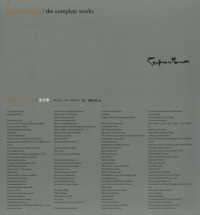Full Description
A periprosthetic joint infection occurs when bacteria or other foreign organisms enter a wound during or at any point following joint replacement surgery, sometimes even years after surgery. An infection can cause the joint to be painful or cause the implant to loosen, sometimes resulting in the need for revision surgery (Science Daily).Written by an author and editor team principally from Pennsylvania, USA, this practical guide offers advice on the management of surgical site infections following orthopaedic procedures.Divided into four sections, the book begins with an introduction to the basics of infection. The following sections discuss prevention, diagnosis and treatment. The section on diagnosis includes the American Academy of Orthopaedic Surgeons (AAOS) Clinical Practice Guidelines.Editor, Javad Parvizi, was vice chair of the work group for The Diagnosis of Periprosthetic Joint Infections of the Hip and Knee Guideline and Evidence Report, adopted by the AAOS in 2010. Key points Practical guide to the basics, prevention, diagnosis and treatment of periprosthetic joint infectionIncludes American Academy of Orthopaedic Surgeons Clinical Practice GuidelinesIncludes contributions from many US-based specialistsEditor, Javad Parvizi - vice chair of guideline and evidence report adopted by AAOS in 2010
Contents
Section 1Defining Periprosthetic Joint InfectionsIncidence and Burden of Periprosthetic Joint InfectionsEconomics of Periprosthetic Joint InfectionAntibiotics and Periprosthetic Joint Infection: Basic ScienceThe Role of Biofilm in Periprosthetic Joint InfectionMultidisciplinary Approach and Management of Patients with Periprosthetic InfectionsPeriprosthetic Joint Infection: Future Trends and ChallengesSection 2: PreventionPredisposing Factors for Periprosthetic Joint InfectionPatient Medical OptimizationPreoperative Diabetic Maintenance and ControlPreoperative Skin Preparation: Decolonization and AntisepsisControversial Preventive StrategiesThe Operating Room EnvironmentIncise DrapesAntibiotic ProphylaxisWorkup of Patients with Suspected Urinary Tract InfectionIrrigation Solutions in Total Joint ArthroplastyBone Cement and AntibioticsBlood ConservationWound ClosureDrainsPostarthroplasty Antibiotic ProphylaxisSection 3: DiagnosisAAOS Clinical Practice Guidelines: Diagnosis of Periprosthetic Joint Infections in Hip and KneeAvailable Diagnostic Laboratory TestsAspirationMolecular Markers in PJIImaging for Diagnosis of Periprosthetic Joint InfectionCulture-Negative Periprosthetic Joint InfectionDiagnosis of Prosthetic Joint Infection in Inflammatory ConditionsConditions Mimicking Periprosthetic Joint InfectionSection 4: Treatment of PJITotal Joint Arthroplasty in Patients with Prior Septic ArthritisJoint Arthroplasty in Patients with Hardware In SituManagement of Wound DrainageManagement of Fungal Periprosthetic Joint InfectionsManagement of Mycobacterial InfectionManagement of Prosthetic Joint Infection Caused by EnterococcusIrrigation and Debridement with Modular Component Exchange for Periprosthetic Joint InfectionOne-Stage Exchange Arthroplasty for Periprosthetic Joint InfectionResection ArthroplastyRemoval of Well-Fixed Hip and Knee Arthroplasty Components in the Setting of Periprosthetic Joint InfectionTwo-Stage Exchange Arthroplasty: Antibiotic SpacersReimplantation Following Two-Stage Exchange Arthroplasty for Periprosthetic Joint InfectionSuppression of Prosthetic Joint Infection Using Antimicrobial TherapyPrognostic Classification for Periprosthetic Joint InfectionOutcome in Periprosthetic Joint Infection Treatmen








